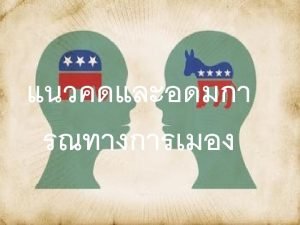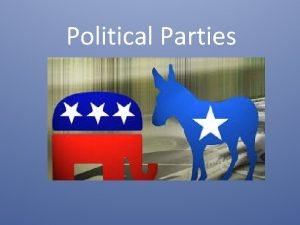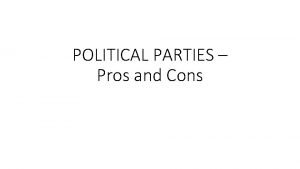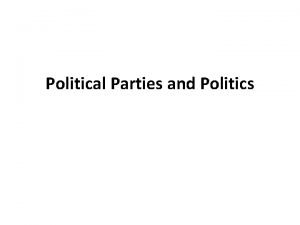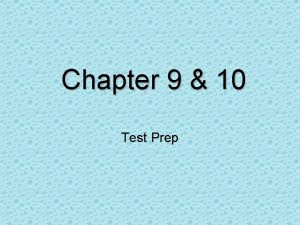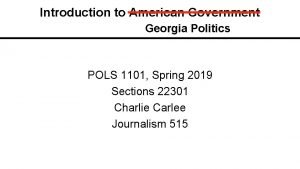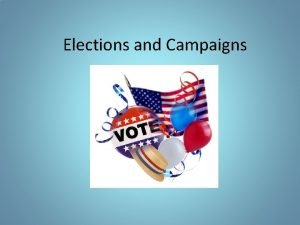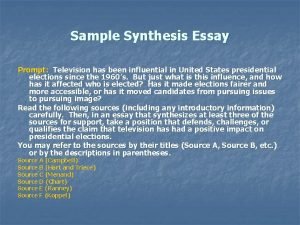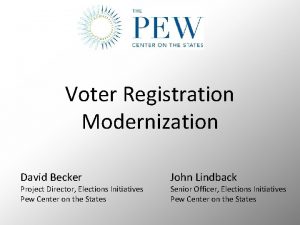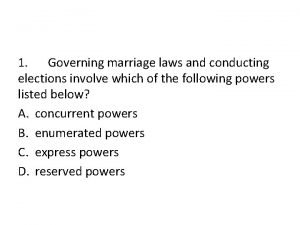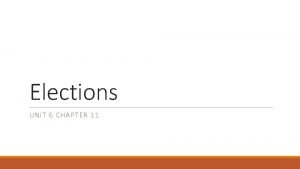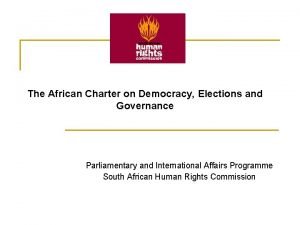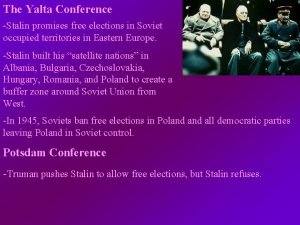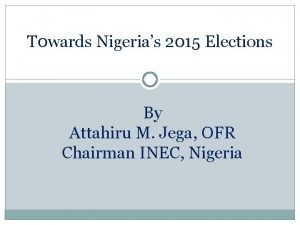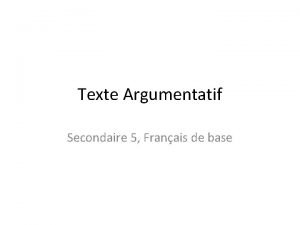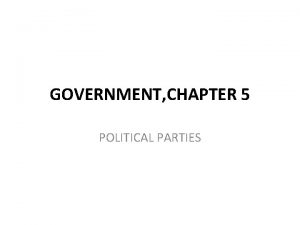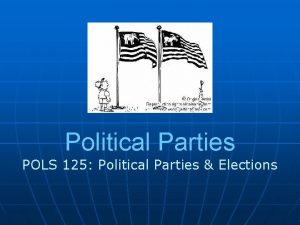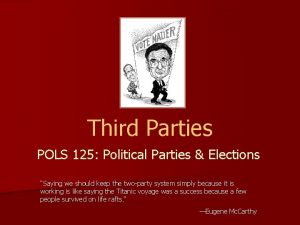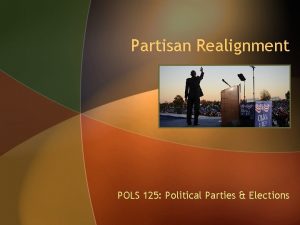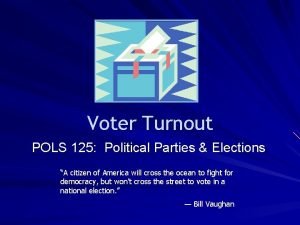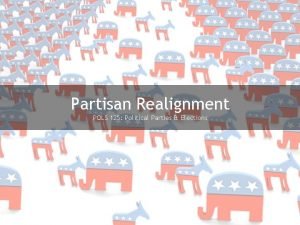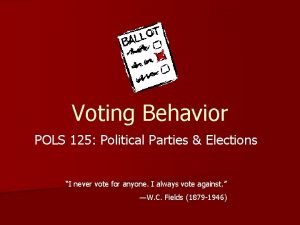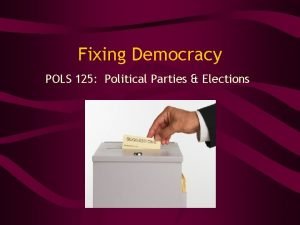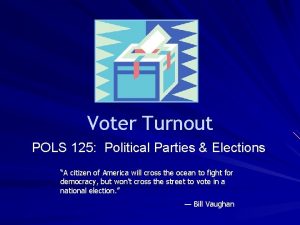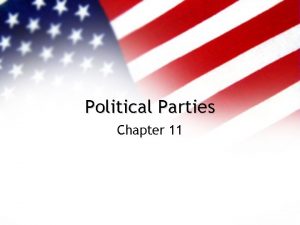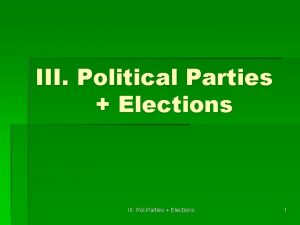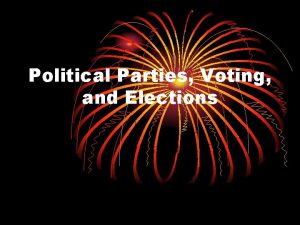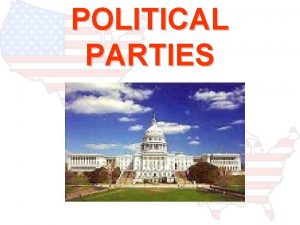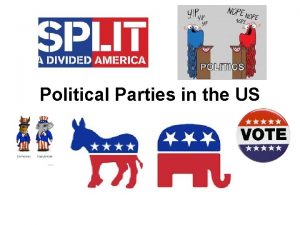Midterm Elections POLS 125 Political Parties Elections http

























- Slides: 25

Midterm Elections POLS 125: Political Parties & Elections

http: //www. thedailyshow. com/watch/monnovember-6 -2006/daily-show-rock----midterm-elections

n n n Voters are apathetic, turnout is low A rigged and corrupt system ensures the reelection of incumbents Midterm elections don’t matter





Losses by the President's Party in Midterm Elections, 1862 -2010

The president’s party tends to lose seats in midterm elections. Period.

Theories of Midterm Loss n n “Surge-and-decline” focuses on shifts in voter turnout “Referendum” theories focus on the president’s popularity and performance (e. g. , national security, economic conditions)

Erikson’s Theories on Midterm Loss n n Midterm loss as regression to the mean Midterm loss as surge and decline Midterm loss as a referendum on presidential performance Midterm loss as a presidential penalty

Turnout in Presidential and Mid-Term Elections, 1980 -2010 41. 3%



Erikson’s Theories on Midterm Loss n n Midterm loss as regression to the mean Midterm loss as surge and decline Midterm loss as a referendum on presidential performance Midterm loss as a presidential penalty

Tufte Model

Tufte Model

Fair’s Model VOTECC = 48. 53 -. 482*INFLATIONCC +. 710*(15/7)*GOODNEWSCC VOTECC = Democratic share of the two-party House vote in 2014. INFLATIONCC = The growth rate of the GDP deflator in the first 7 quarters of the second Obama administration, 2013: 1 -2014: 3, at an annual rate. GOODNEWSCC = The number of quarters in the first 7 quarters of the Obama administration in which the growth rate of real per capita GDP is greater than 3. 2 percent at an annual rate. These values lead to a predicted Democratic vote share of 50. 85 percent


“The economy elects presidents. Presidents elect Congress. ” — Lynn Vavreck, political scientist


http: //thedailyshow. cc. com/videos/exzp 4 a/dem ocalypse-2014 ---it-s-all-about-that-base

Erikson’s Theories on Midterm Loss n n Midterm loss as regression to the mean Midterm loss as surge and decline Midterm loss as a referendum on presidential performance Midterm loss as a presidential penalty

“We rely on statistical models for many decisions every single day, including, crucially: weather, medicine, and pretty much any complex system in which there’s an element of uncertainty to the outcome. In fact, these are the same methods by which scientists could tell Hurricane Sandy was about to hit the United States many days in advance. Dismissing predictive methods is not only incorrect; in the case of electoral politics, it’s politically harmful. ” — Zeynep Tufekci, “In Defense of Nate Silver, Election Pollsters, and Statistical Predictions”

 Pols 1101 final exam study guide
Pols 1101 final exam study guide Soup and ideology
Soup and ideology Political parties
Political parties Political parties
Political parties Political parties
Political parties Political parties pros and cons
Political parties pros and cons Brainpop political parties
Brainpop political parties Political
Political What was one way progressives differed from populists
What was one way progressives differed from populists Nadi di kaki namanya
Nadi di kaki namanya Steunverband pols aanleggen
Steunverband pols aanleggen Uga pols 1101
Uga pols 1101 Presidential elections exploration and announcement
Presidential elections exploration and announcement Ap lang synthesis essay television presidential elections
Ap lang synthesis essay television presidential elections David becker elections
David becker elections Governing marriage laws and conducting elections involve
Governing marriage laws and conducting elections involve “elections are key to democracy”
“elections are key to democracy” African charter on democracy, elections and governance
African charter on democracy, elections and governance Stalin promise free elections
Stalin promise free elections Conclusion on elections
Conclusion on elections Http //mbs.meb.gov.tr/ http //www.alantercihleri.com
Http //mbs.meb.gov.tr/ http //www.alantercihleri.com Siat.ung.ac.id krs
Siat.ung.ac.id krs American literature jeopardy
American literature jeopardy Conclusion partielle texte argumentatif exemple
Conclusion partielle texte argumentatif exemple The smallest unit of election administration
The smallest unit of election administration Self-announcement definition
Self-announcement definition

